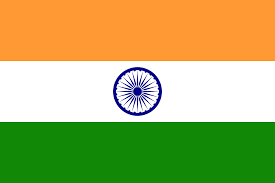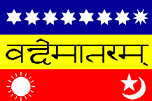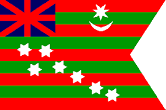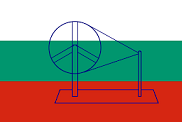 Introduction
Introduction
The National flag, which is a symbol of the Nation’s pride, is Respectfully Hoisted on National Festivals like Independence Day and Republic Day. Every free Nation of the World has its own flag. It is a symbol of a free country. The National Flag of India was adopted in its present form during the meeting of Constituent Assembly held on the 22 July 1947.
 Indian Flag
Indian Flag
The National Flag of India is a horizontal rectangular tricolor of India saffron, white and India green; with the Ashoka Chakra, a 24-spoke wheel, in navy blue at its centre. It was adopted in its present form during a meeting of the Constituent Assembly held on 22 July 1947, and it became the official flag of the Dominion of India on 15 August 1947.
- Saffron: Saffron is a symbol of courage and sacrifice.
- White: The white color represents honesty, peace, and purity. It highlights the importance of maintaining peace in the country.
- Green: The green color represents faith and chivalry. It is a symbol of prosperity, vibrancy, and life.
- Ashoka Chakra: The Ashoka Chakra or the Dharma Chakra (Wheel of Law) has 24 spokes and appears on a number of edicts of Ashoka.
 History
History
The History of the Indian National Flag over the years:
British India Flag 1858:
Source: Click Here
- This flag introduced by British India in 1858. The design of the flag was based on western heraldic standards and it was similar to flags of other British colonies, including Canada and Australia. The blue banner included the Union Flag in the upper-left quadrant and a Star of India capped by the royal crown in the middle of the right half
Indian Flag in 1906:
Source: Click Here
- The first national flag in India is said to have been hoisted on August 7, 1906, in the Parsee Bagan Square (Green Park) in Calcutta now Kolkata. The flag was composed of three horizontal strips of red, yellow and green.
- After Sister Nivedita's flag, another flag was designed in 1906. It was a tricolour with three equal strips of blue (top), yellow (middle) and red (lower). In this flag, the blue strip had eight stars of slightly different shapes. The red strip had two symbols, one of sun and the other of a star and a crescent. The yellow strip had 'Vande Mataram' written on it in Devnagiri script.
Indian Flag in 1907:
Source: Click Here
- The second flag was hoisted in Paris by Madame Cama and her band of exiled revolutionaries in 1907 (according to some inl9OS). This was very similar to the first flag except that the top strip had only one lotus but seven stars denoting the Saptarishi. This flag was also exhibited at a socialist conference in Berlin.
- In 1907 came the Madam Bhikaji Rustom Cama's flag. The flag was collectively designed by Madam Bhikaji Cama, Vinayak Damodar Savarkar (Veer Savarkar) and Shyamji Krishna Varma. The flag was unfurled by Madam Cama on 22 August 1907 at Stuttgrat, Germany, and attained the status of the first Indian flag to be hoisted in a foreignland.
Indian Flag in 1916:
Source: Click Here
- The Home Rule League formed by Bal Gangadhar Tilak adopted a new flag in 1917, as at that time the Dominion status was being demanded for India. The flag had the Union Jack at the top, near the hoist. The rest of the flag contained five red and four blue strips.
- The third flag went up in 1917 when our political struggle had taken a definite turn. Dr. Annie Besant and Lokmanya Tilak hoisted it during the Home rule movement. This flag had five red and four green horizontal strips arranged alternately, with seven stars in the saptarishi configuration super-imposed on them. In the left-hand top corner (the pole end) was the Union Jack. There was also a white crescent and star in one corner.
Indian Flag in 1921:
Source: Click Here
- As Mahatma Gandhi wanted all the communities of India to be represented in the flag of the nation, a new flag was designed. This flag had three colours. At the top was white than green and at the bottom was red. White symbolised minority communities of India, green Muslims, and the red represented Hindu and Sikh communities.
- During the session of the All India Congress Committee which met at Bezwada in 1921 (now Vijayawada) an Andhra youth prepared a flag and took it to Gandhiji.
- It was made up of two colours-red and green-representing the two major communities i.e. Hindus and Muslims.
- Gandhiji suggested the addition of a white strip to represent the remaining communities of India and the spinning wheel to symbolise progress of the Nation.
Indian Flag in 1931:
Source: Click Here
- Some people were not happy with the communal interpretation of the flag. Keeping this in view, a new flag was designed which replaced red with ochre.
- This colour signified the combined spirit of both religions as saffron was the colour of Hindu yogis as well as Muslim darvesh.
- The year 1931 was a landmark in the history of the flag. A resolution was passed adopting a tricolor flag as our national flag.
- This flag, the forbear of the present one, was saffron, white and green with Mahatma Gandhi's spinning wheel at the center. It was, however, clearly stated that it bore no communal significance and was to be interpreted thus.
 Rules
Rules
According to the ‘Flag Code of India’:
- The National flag should be hoisted at a height in a suitable manner.
- Whenever the flag is hoisted, it should occupy the position of honor and be distinctly placed.
- Where the practice is to fly the flag on any Government building, it should be flown on that building on all days including Sundays and holidays from sunrise to sunset, irrespective of the weather conditions.
- The flag should always be hoisted briskly and lowered slowly and ceremoniously. The hoisting and lowering should be simultaneous with the bugle calls.
- When the flag is displayed horizontally or at an angle from the window or balcony, of a building, the saffron band must be uppermost.
- When the flag is flown during a public meeting, the speaker should face the audience and the flag should be displayed behind and to the right of the speaker or flat against the wall above and behind the speaker.
- When used on occasions like the unveiling of a statue, the flag shall be displayed distinctly and separately.
- When the flag is displayed on a car, it should be attached to a staff, which should be affixed firmly on the bonnet of the car.
- When the flag is carried in a procession or a parade, it should be held in the right hand. If there is a line of other flags, the National flag should be in the middle.
- The flag should not be stooped downwards with respect to any person or thing.
- No other flag should be hoisted higher than the National flag.
- The flag should not be used to cover or decorate the speaker’s desk during any meeting.
- The National flag should never be displayed with the saffron band down.
- The flag should not be allowed to touch the ground or trail in the water.
- The flag should not be displayed or fastened in a manner which might damage it.










